Twenty six airline names disappeared in 2012 – an average of two per month. Some “biggish” name carriers sadly vanished including Malev and Spanair. One of the airlines “died” and came back (Air Zimbabwe) and two more have promised a return. Some of the victims were amongst the oldest airlines in the world. An extraordinary 13 of the carriers that went were Europe based. Four African carriers went, Australia, Asia, the USA South America/Caribbean all lost two.
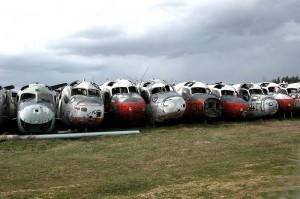
One of my burning questions from the year’s bankruptcies is: Why do consumers get dumped? Most of the airlines gave absolutely no notice of their demise and passengers were stranded. No one seems to take responsibility when there is a collapse. There is always a flurry of other airlines picking up pieces amidst news stories of families sleeping in airport lounges, retirees selling shares to buy tickets home and brides missing their wedding days. The collapses also show how many people don’t buy travel insurance! Why is there not a fund that takes a few cents per ticket to cover the cost of such a collapse? The fund would be drawn upon to get people home with kess fuss
Likewise, why do employees treated so badly? Why do they need to wait so long for entitlements? Why do they have to protest outside their management offices to get back salaries? Air Nigeria sacked all of their staff for “dishonesty” to avoid paying them four months of salaries. Air Australia stranded their staff at airports around the world and other carriers had to bring them home. Not acceptable it would seem to me.
Several charter and low cost carriers vanished this year. Is this a response to the global economy or a sign of something else? Andreas Wittmer of the Center for Aviation Competence at the University of St Gallen said in June that he believes” that the era of easily affordable flights – driven by low cost airlines – may be drawing to an end. “The average prices people pay for flights are unrealistically low. There will come a time when air travel will become more expensive again.” Is he right?
Finally, when new airlines start, surely airline regulators need to ensure that they have sufficient capital to survive. The old adage for travel is to take half the luggage and twice the cash. May need to be the same for airline operators? Twice the cash and half the trappings?
Now for this years “honour” roll in alphabetical order:
1time Airline 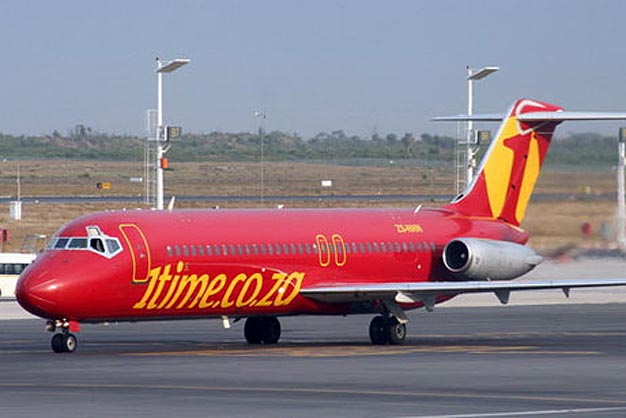
South Africa: 25 Feb 2004 to 2 Nov 2012 Fleet: 12 Destinations: 9 Employees: 420
Despite loyalty from its customers, 1time sat in the red because of inefficient aircraft and low passenger loads. After an attempt to financially reorganise in August, liquidators were called in. On December 20, new Tanzanian airline Fastjet (founded by Easyjet founder: Stelios Haji-Ioannou) announced they would buy 1time for one rand (12 US cents). Former staff and three planes would form the nucleus of the South African component of the carrier.
Related Posts
Air Australia Airways
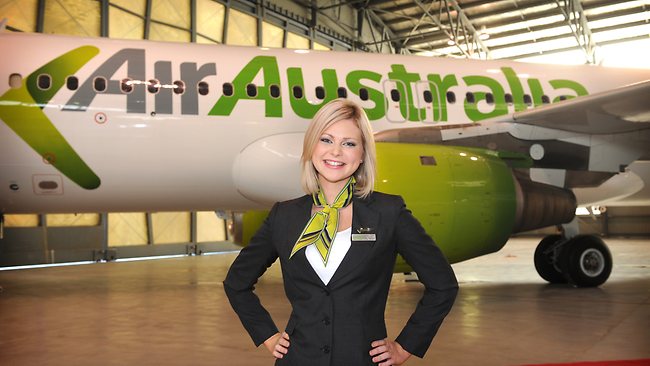 Australia 15 Nov 2011 to 17 Feb 2012 Fleet: 4 Destinations: 8 Employees: 350 This was one of the most short-lived airline brands ever. Originally a charter carrier it launched as a full service carrier and bled cash from day one to its 92nd day. On the day of its collapse, Air Australia had $90 million in liabilities and only $1 million in assets. Inexperienced management was blamed for the demise.
Australia 15 Nov 2011 to 17 Feb 2012 Fleet: 4 Destinations: 8 Employees: 350 This was one of the most short-lived airline brands ever. Originally a charter carrier it launched as a full service carrier and bled cash from day one to its 92nd day. On the day of its collapse, Air Australia had $90 million in liabilities and only $1 million in assets. Inexperienced management was blamed for the demise.
Related Posts
Air Australia Grounded- Shock! Not
Air Australia–Where does a new Carrier fit?
Air Finland
Finland- 3 Apr 2002 – 26 Jun, 2012 Fleet: 3 Destinations: 6 Employees: 210 
High fuel prices and low loads were blamed for the demise of this tour package operator. It seems they may have been a “victim” of the Global Financial Crisis.
Related Posts
Air Nigeria (originally Virgin Nigeria) 
Nigeria- 28 Jun 2005 – 10 Sep 2012 Fleet: 12 Destinations: 19 Employees: 1000
Once seen as the saviour of the Nigerian air industry, the airline struggled after Virgin sold its 49% share and relinquished the rights to the use of the Virgin name between 2008 and 2010. The end came swiftly. In January 2012, Licensed Engineers in Air Nigeria went on strike because they claimed they were being forced to certify unfit aircraft into the air. In May, the company was showing signs of severe financial distress. In June, 2012 a former top company official referred to the airline’s as “flying coffins” because maintenance had been so severely cut. He warned Nigerians not to fly the carrier. There were claims the airline was siphoning off funds to pay for their owner’s other investments. Soon companies began withdrawing services to Air Nigeria for non payment of accounts. On 6 September 2012 Air Nigeria announced that the management had sacked almost all of its employees for “dishonesty” and that the airline was ceasing all services four days later. The Nigerian regulators noted the carrier owed $US30 million in tax claims dating back to 2007. In addition, employees had not been paid for four months when they lost their jobs.
Related Posts
Bmi (British Midland International) 
UK: 1953 to 27 Oct 2012. Fleet: 27 Destinations: 35
One of my favourite carriers, this Star Alliance had struggled to make money for a long time. Their valuable Heathrow slots were probably their biggest asset. Taken over by the International Airlines Group, they have been merged into British Airways.
Related Posts
BMI Baby
UK: 22 Mar 2002 to 9 Sept 2012. Fleet: 11 Destinations:42
Shut down by new owners International Airlines Group after purchasing their owner bmi.
Related Posts
Cimber Sterling
Denmark: 1949 to 3 May 2012 Fleet: 19 Destinations:25
Cimber Sterling was a hybrid full service low cost carrier owned by Ukrainian Billionaire Ihor Kolomoysky’s company: Manswell Enterprises. In May, Manswell pulled financial support from the company.
Related Posts
City Airline/Skyways
Sweden: 1993 (although one subsidiary started 1940) to 22 May, 2012. Fleet: 19 Destinations:25
Skyways acquired City Airline in 2011 and was integrating the two brands at collapse. Both were owned by Ukrianian Billionaire Ihor Kolomoysky’s company: Manswell Enterprises Limited, along with CimberSterling. In May, Manswell stopped funding both Cimber and City Airline/Skyways.
Cirrus
Germany: March, 1988 to 20 Jan, 2012 Fleet: 10 Destinations:11 Employees: 300 
Lufthansa ceased their Partnership agreement with Cirrus. This combined with high fuel prices, a weakened economy, and the German aviation tax are the reasons cited for the first airline collapse of 2012.
Direct Air 
USA: 7 March, 2007 to 13 March, 2012. Fleet: 4 Destinations:18
On March 12, 2012, Direct Air cancelled all of their charter flights apparently for missed fuel payments. Flights were due to restart May 15, 2012 but instead Chapter 7 liquidation commenced April 12, 2012. Court documents showed the company has at least $10 million in debt and just $500,000 to $1 million in assets.
Related Posts:
GMG 
Bangladesh: 6 April, 1998 to 30 March, 2012. Fleet: 5 Destinations:5 Employees: 501 to 1000
GMG suspended operations one week shy of their 14th anniversary. They promised a return at the end of 2012 but that has not eventuated. A former GMG Airlines official said: “GMG had a good start. But it was impossible for the airliner to continue operations because of a lack of necessary planning and some other reasons.” These reasons included high interest rates and fuel and maintenance costs. GMG was the first private airline in Bangladesh. Seven other private airlines started subsequently. Five of these have also gone. A new carrier NovoAir, seen as a replacement for GMG, was launched 6 Dec 2012. Novo has a relationship with Tiger of Singapore so this one may last?
Hello
Switzerland: 6 Aug 2004 to 21 Oct 2012. Fleet: 5 Destinations:26 Employees: 140 
As a result of the high Swiss Franc compared to the Euro, the German travel agency TUI ended its relationship with Hello and planned to expand its own charter airline. Hello also claimed their financial situation had been not understood by directors because of accounting mistakes by their ex-chief financial officer.
Islas
Spain – Canary Islands: Feb 2003 to 16 Oct, 2012. Fleet: 6 Destinations: 6 Employees: 140
Islas Airways cancelled their entire operations with employees owed up to four months wages. The carrier themselves claimed they were owed millions of euros in subsidies from the Spanish government. They promised the closure would be temporary.
Jetlink Express
Kenya 2006 to 16 Nov 2012 Fleet: 7 Destinations: 8 Employees: 350
Funds withheld by South Sudanese government are claimed to be the reason for Jetlink’s demise.
Related Posts:
Jetlink Jinxed by South Sudan?
Kingfisher 
India: 9 May 2005 to 20 Oct 20, 2012. Fleet: 11 Destinations: 25 Employees: 3,766
Kingfisher promised great service, good fares, good catering and new planes but never made a profit. By the start of 2012, accumulated losses reached $US1.27 billion.Half of its fleet was impounded and much of its staff went on strike. I have been waiting for them to finally give up the ghost for months. Kingfisher are still saying they will fly again yet they owe money to their employees, customers, airports, aeroplane leasing companies and the Indian tax authorities.
Related Posts
Kingfisher highlights Indian air woes
Kuban
Russia 1932 to Dec 11, 2012. Fleet: 17 Destinations: 17 Employees: 501-1000 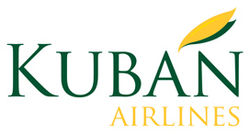
Russia’s Krasnodar-based Kuban Airlines started as a division of Aeroflot in 1932. It was privatised in 1992. The airline was unable to meet payments on three Airbus A319s to its lessors due to its inability to pay and said it could not meet new requirements that took effect in 2012 requiring Russian airlines using aircraft with larger than 55 seats to have at least eight planes of the same type.
Malev 
Hungary 29 Mar 1946 to Feb 03, 2012. Fleet: 23 Destinations: 50 Employees: 2,800
Malev’s days were numbered when the European Commission ruled that government aid the carrier had received got between 2007 and 2010 were illegal subsidies and the airline had to repay them. Malev was already in debt and the government which had been financing them withdrew support.
Related Posts
Malév Malaise- Hungary’s flag carrier demise
Trip Report: My last Malév flight
Mint Airways
Spain: 2009 to May 25th 2012. Fleet: 2 Destinations: Aircraft leasing company
Mint’s biggest customer had been Thomas Cook. It seems the company may have ceased or reduced its arrangement over the 2012 European summer.
Norfolk 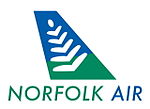
Australia May, 2006 to Feb 26, 2012. Fleet: 1 Destinations: 5 Employees: 2,800
The Administration of Norfolk Island established the airline in 2006 awarding operations to two different air carriers. In 2011, the Administration indicated their intention to cease operating the airline. Services to the island are now operated by Air New Zealand.
Pluna

Uruguay 19 Nov 1936 to 5 Jul, 2012 Fleet: 19 Destinations:53 Employees: 750
A 75 year history didn’t save Pluna, shut down by the Uruguayan government amid strike action by staff.
Related Post:
Redjet
Barbados: 10 May, 2011 to 16 Mar, 2012. Fleet: 3 Destinations: 6 Employees: 94
Another carrier that never lived to see its first birthday. The Barbadian flag carrier advertised itself as a low-cost, no-frills carrier and promised $US9.99 fares. Six months after launch it said $US4 million was needed to keep it going. Four months later, it was declared insolvent, sacked all of its employees, and announced on social media that it had “no future in Barbados”, blaming the government for a lack of support. The founders said flying approvals were delayed which cost them millions of dollars in start-up capital.
Spanair
Spain: March 1988 to Jan 27, 2012. Fleet: 29 Destinations: 40
Started as a SAS – local travel company joint venture, the airline was basically never profitable. After a purchase deal with Qatar Airways fell through, Spaniar abruptly shut down.
Related Posts:
Spanair
USA 3000 
USA: 28 Dec, 2001 to Jan 30, 2012 Fleet: 2 Destinations: 13
Apple Vacations began the airline to ferry its customers to destinations. The airline opened up its charter flights to the general public. USA 3000 briefly flew military charters. In 2011, Apple Vacations annoiunced their intention to cease airline operations and use existing carriers to fly their passengers.
Velvet Sky
South Africa: 22 March 2011 to 27 Feb , 2012 Fleet: 4 Destinations: 5
This was an airline with such potential. Founded with the premise of black empowerment, the carrier did not make it to one year. The airline ran out of cash and owed significant amounts to fuel companies. These companies embargoed fuel and the airline began to cancel flights. As the flight cancellations escalated, passengers exited. This turn of events led to suspension of operations. Staff were owed up to three months of wages.
Windjet
Italy: 17 Jun 2003 to 11 Aug 2012. Fleet: 12 Destinations: 26
Italy’s fourth largest’s carrier was cash strapped with debts to the tune of €140 million. Alitalia almost bought the carrier but after months of negotiation, the deal fell through and it was forced to close in August by ENAC, the Italian civil aviation authority. The collapse has taken on the scale of an Italian soap opera with huge arguments over compensation for passengers stranded by the first Windjet, a lawsuit against Alitalia by the former owners of Windjet, legal action over impounded jets at Malta airport and the promise of a relaunch on 5th December. So far, they have a pretty website !
Related Posts



The closure of some of the leading airlines in the world, means that on one hand customers still perceive air-travel to be expensive, at the same time most carriers are either severely crushed under debt, further weighed down by high fuel-costs and expensive(:greedy) private airports. In such a scenario, the only way to survive for an airline is to have a maniacal eye on having lowest costs per seat-kilometre, while making sure they have HUGE customer pull either through differentiated value-propositions or simply by being EDLP (EveryDayLowestPrice) to ensure full loads on as many aircraft-rotations through the day.
Politics and Politicians are to blame for Demise of famous Zambia Airways Zambia’s National flagcarier in 1994 because it was owned by the Unip Government. MMD when they came into Power Government of Republic of Zambia liberalised the Economy and Encourage Private sector in Zambia to operate and manage airlines and liquidated Zambia Airways because it was not making profits. The reason was directors running this airline were politically appointed because of allegiance the government . The result was a disaster : Aero Zambia came with a bang it disappeared reason sensitive one it was alleged that Aero Zambia was used to supply food and Medical supplies to UNITA Rebels in Angola. Accountant Director took advantage of this situation and stole a lot of cash with intent if you fire me I’ll reveal all the secrets by 1997 it was End of Aero Zambia. Zambia Express Airways lasted only for Two Months in 1994 Decembr by 1995 it disappeared. Reason Shareholders got most of Return on Investment at the expense of paying for lease of Boeing 767. In October 1999 Zambian Airways came with a bang in March 2010 because of political reasons Zambian Airways ceased to operate because one of the share holders of was supporting an opponent to the then President Rupiah Banda Mr.Ngandu Magande during elections.When Rupiah Banda won the Elections he made sure that Zambian Airways pay all the dues owed to Government agencies such as National Airports Corporation. Which Ngandu Magande promised to write off if he wins the elections. When Zambian Airways ended Zambezi Airlines came with a bang. April 2010. After a political change of government in September 2011 Zambezi Airlines ended because of the following reasons: Share holders were getting a lot of Return on Investment at the expense of Servicing the Aircrafts and because some shareholders were not in good term with the new government Zambezi Airlines Ended. So Politics and Shareholders of Airlines in Zambia has contributed to fall of Airlines in Zambia.
The result has been disaster Employees who worked for Zambia Airways before it was liquidated have not been paid their retirement packages and pension. And most of them have died from 1994 to date they haven’t been paid their dues.